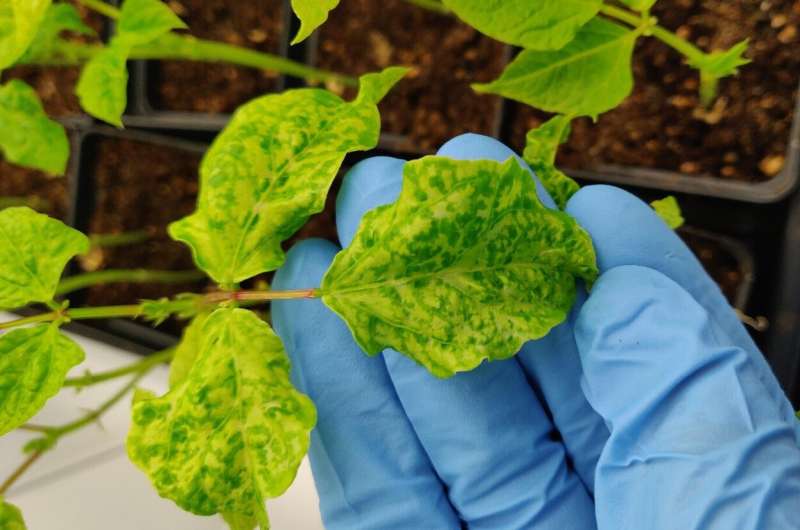Researchers discover how cowpea mosaic plant virus activates immune system against cancer

Cowpea mosaic virus, when injected into cancerous tumors, stimulates the immune system to attack and often eliminate the tumor. In a new study, immunology researchers in Dartmouth's and Dartmouth-Hitchcock's Norris Cotton Cancer Center, in collaboration with researchers at the University of California San Diego Jacobs School of Engineering, characterize the previously unidentified pathways through which CPMV is recognized by the immune system, opening the door for pursuit of CPMV as a new biological cancer treatment.
Previous work by a team of researchers led by Steven N. Fiering, Ph.D., Immunology and Cancer Immunotherapy researcher at Dartmouth's and Dartmouth-Hitchcock's Norris Cotton Cancer Center and Nicole Steinmetz, Ph.D., Jacobs School of Engineering and Moores Cancer Center, University of California San Diego, showed that a plant virus that does not infect mammals, cowpea mosaic plant virus (CPMV), when injected into cancerous tumors, strongly stimulated the immune system to attack and often eliminate the tumor. However, very little was understood about immune recognition of plant viruses and how and why CPMV is exceptionally immuno-stimulating. In a new study, the team identifies just how CPMV is recognized by the immune system, opening the door for CPMV to be pursued as a new biological drug for treatment of cancer.
CPMV is recognized by the immune system as a pathogen—any infectious agent that can cause disease—through a family of receptors on immune cells called toll-like receptors. Toll-like receptors recognize molecules that signal the invasion of a pathogen and send a warning signal to the immune cells to mobilize to attack the pathogen. When tumors are injected with CPMV, the immune system activates and attacks the tumors by way of this pathogen pattern recognition. "The recognition of CPMV by toll-like receptors illustrates how these receptors are quite flexible and recognize many more molecular patterns than immunologists previously knew," says Fiering.
During the immune stimulation process, the immune cells release proteins that signal and activate other immune cells, known as cytokines. The team's study, "Cowpea mosaic virus stimulates antitumor immunity through recognition by multiple MYD88-dependent toll-like receptors," newly published in Biomaterials, identifies the three toll-like receptors that recognize CPMV. The paper also highlights the importance of a particular cytokine, "interferon alpha," for strong anti-tumor impact when used as an in situ vaccine to treat cancer.
In situ vaccination, in which tumors are directly treated with immune stimulating reagents, have powerful potential to improve cancer immunotherapy in a safe and inexpensive manner. "In situ vaccination has made contributions already to cancer treatment. CPMV is an excellent reagent that may soon be used to help patients in the same manner," says Fiering. "The in situ vaccination treatment of a tumor by CPMV can stimulate the immune system to also attack distant metastatic tumors that have not been treated."
More information: Chenkai Mao et al, Cowpea mosaic virus stimulates antitumor immunity through recognition by multiple MYD88-dependent toll-like receptors, Biomaterials (2021). DOI: 10.1016/j.biomaterials.2021.120914


















